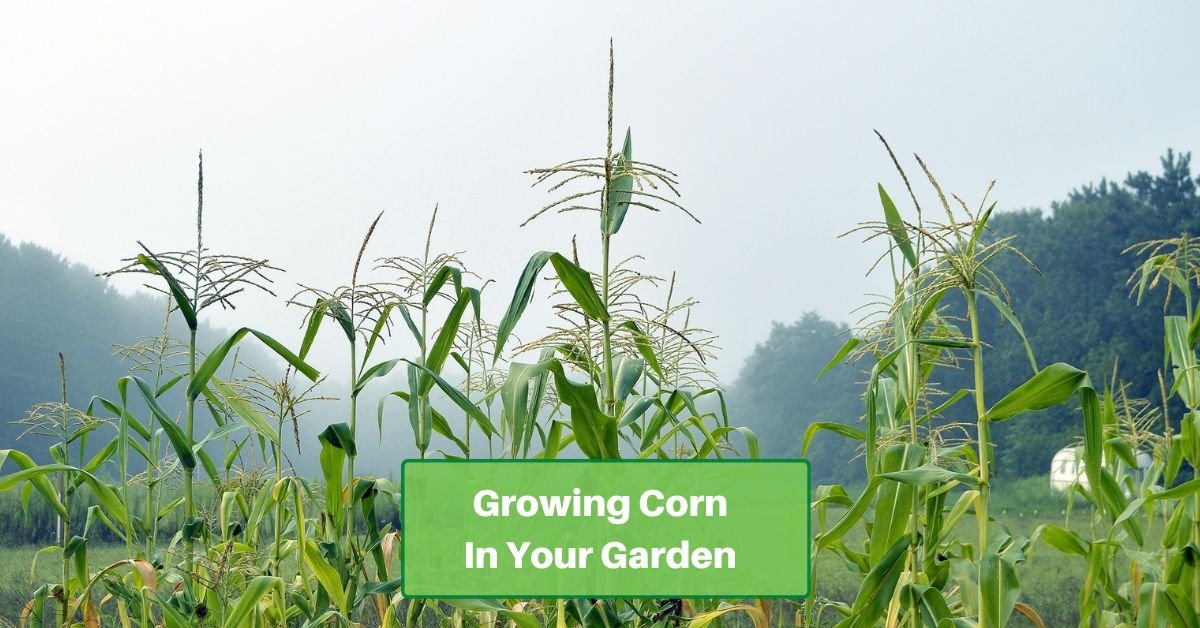Corn’s golden kernels and sweet taste are a favorite summertime treat. Imagine the joy of growing your own corn in your garden! In this article, we’ll take you through the process of growing corn, from planting the seeds to harvesting the cobs.
Selecting the Right Variety
Choosing the right corn variety is the first step to a successful harvest. There are different types of corn, such as sweet corn, popcorn, and field corn.
Sweet corn is the most popular choice for a garden because of its delicious, tender kernels. But even within sweet corn, there are various varieties, including yellow, white, and bi-color. You can select whichever best suits your taste.
Preparing the Soil
Corn thrives in well-drained, nutrient-rich soil. Here’s how to prepare your garden soil:
Soil Type
Corn prefers loamy soil, which is a mixture of sand, silt, and clay. Loamy soil provides good drainage while retaining moisture.
Soil pH
Aim for a slightly acidic to neutral pH level between 6.0 and 7.0. You can test your soil’s pH with a kit from your local garden store.
Amending the Soil
Before planting, work compost or well-rotted manure into the soil. This improves fertility and helps retain moisture.
Order Sweet Corn Seeds Online
Planting the Seeds
Now, it’s time to get your corn seeds in the ground. Follow these steps:
Spacing
Corn is usually planted in rows to ensure proper pollination. Space the rows 30-36 inches apart, and leave 9-12 inches between each corn plant within the row.
Planting Depth
Plant the corn seeds about 1-1.5 inches deep in the soil. Plant them in groups of 2-3 seeds, spaced about 9-12 inches apart.
Sunlight
Corn loves sunlight. Make sure your garden spot receives at least 6-8 hours of direct sunlight each day.
Planting Time
Wait until the soil temperature reaches 50-86°F (10-30°C) before planting, typically in late spring or early summer. That gives you a great range of time for planting, fortunately.
Watering and Fertilizing
Corn needs consistent moisture and nutrients to grow well. Here’s how to keep your corn plants happy:
Watering
Corn needs regular watering, especially during dry spells. Aim to keep the soil consistently moist but not waterlogged. Water at the base of the plants to avoid wetting the leaves, which can lead to disease. Soaker hoses are a good choice, too.
Fertilizing
Corn is a heavy feeder, so it benefits from fertilization. You can use a balanced granular fertilizer before planting, and then side-dress with additional fertilizer when the plants are about knee-high and again when they start to tassel.
Pollination:
Corn plants have male flowers (tassels) and female flowers (ears). Proper pollination is essential for good corn production. Corn is wind-pollinated, so it’s best to plant it in blocks or multiple rows rather than single rows to ensure good pollination. Bees can also help with pollination.
Managing Weeds and Pests
Keep an eye out for weeds and pests that can affect your corn crop:
Mulching around the corn plants can help suppress weeds and retain moisture. Regularly remove any weeds that do sprout to prevent competition for nutrients.
Common pests for corn include corn earworms, aphids, and armyworms. You can use organic pest control methods or insecticidal soap to manage these pests.
Recognizing When Corn is Ready to Harvest:
Corn is ready to harvest at a specific stage of maturity. Look for these signs:
- Ears: The ears should feel full and firm when you gently squeeze them.
- Kernels: Pierce a kernel with your fingernail; if the liquid inside is milky, it’s ready. If the liquid is clear, wait a few more days.
- Silks: The silks (the long, hair-like strands on the ears) should be brown and dry.
- Tassels: The tassels on top of the corn plant should be brown and dry.
Harvesting Your Corn
Harvesting corn is a delightful moment for any gardener.
It’s best to harvest it in the morning when the weather is cooler. This helps maintain the best flavor. Grasp the corn ear firmly and twist it downward and sideways to snap it off the stalk. Avoid pulling, as this can damage the plant.
Enjoy Fresh
Corn is best enjoyed immediately after harvest for the sweetest taste. If you can’t eat it right away, store it in the refrigerator to maintain its freshness.
Post-Harvest Care:
After you’ve harvested your corn, remember to:
- Clean Up: Remove the corn stalks and any remaining plant debris from your garden to prevent diseases from overwintering.
- Rotate Crops: To prevent soil depletion and disease buildup, rotate your crops and avoid planting corn in the same spot next year.
Growing corn in your garden can be a rewarding experience. With the right care, you can enjoy the sweet, fresh, homegrown taste all summer long. So, roll up your sleeves, get your garden tools ready, and start growing your own delicious corn.









